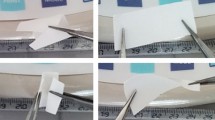Abstract
Mesoporous molecular sieve LiAlSBA was prepared via an ion exchange process with mesoporous AlSBA directly, which has a regular 2D hexagonal structure with pore size about 7 nm. It was added into poly(ethylene oxide) (PEO) solid electrolyte as filler. The characteristics of the composite polymer electrolyte were determined by XRD, DSC, TGA, FTIR, PLM and electrochemical methods. Compared with bare PEO electrolyte, the adding of dispersed LiAlSBA powder improved the ionic conductivity of PEO polymer electrolyte more than three orders. The reason for it is that mesoporous LiAlSBA powder acts as crystal cores in PEO composite electrolyte and fines the crystallites, decreases the crystallinity, which provides much more continuous amorphous domain for Li+ moving easily in PEO electrolyte. Besides, lithium ions of the mesoporous molecular sieves can hop from one site to another along the surface of the mesoporous channels, this mechanism is absent in the case of common nano-ceramic fillers in PEO electrolyte.










Similar content being viewed by others
References
Berthier C, Gorecki W, Minier M, Armand MB, Chabagno JM, Rigaud P (1983) Solid State Ionics 11:91
Oslen I, Koksbang R, Shou E (1995) Electrochim Acta 40:1701
Croce F, Appetecchi GB, Persi L, Scrosati B (1998) Nature 394:456
Liu Y, Jim YL, Hong L (2003) J Appl Polym Sci 89:2815
Sun HY, Sohn HJ, Yamamoto O, Takeda Y (1999) J Electrochem Soc 146:1672
Sun HY, Takeda Y, Imanishi N, Yamamoto O, Sohn HJ (2000) J Electrochem Soc 147:2462
Walls HJ, Peter SF, Thomas AZ Jr, Saad AK (2003) J Electrochem Soc 150:E165
Binod K, Stanley JR, Lawrence GS (2001) J Electrochem Soc 148:A1191
Reddy MJ, Chu PP (2004) J Power Sources 135:1–8
Yue Yh, Gedeon A, Bonardet JL, Melosh N, Baptiste J, Fraissard J (1999) Chem Commun 1967
Ding LM, Shi J, Yang CZ (1997) Synthet Metal 87:157
Mo ZS, Lee KB, Moon YB, Kobayashi M, Heeger AJ, Wudl F (1985) Macromolecules 18:1972
Jiang S, Yu D, Ji X, Au L, Jiang B (2000) Polymer 41:2041
Croce F, Curini R, Martinelli A, Persi L, Ronci F, Scrosati B (1999) J Phys Chem B 103:10632
Wieczorek W, Florjancyk Z, Stevens JR (1995) Electrochim Acta 40:2251
Chu PP, Reddy MJ, Kao HM (2003) Solid State Ionics 156:141
Acknowledgements
This work was supported by National Science Foundation of China.
Author information
Authors and Affiliations
Corresponding author
Rights and permissions
About this article
Cite this article
Li, X., Zhao, Y., Cheng, L. et al. Enhanced ionic conductivity of poly(ethylene oxide) (PEO) electrolyte by adding mesoporous molecular sieve LiAlSBA. J Solid State Electrochem 9, 609–615 (2005). https://doi.org/10.1007/s10008-004-0613-y
Received:
Accepted:
Published:
Issue Date:
DOI: https://doi.org/10.1007/s10008-004-0613-y




